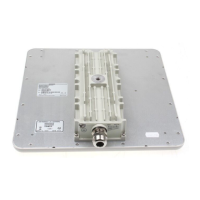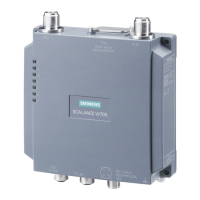Chapter 5
Setup and Configuration
RUGGEDCOM ROS
User Guide
240 Managing Link Aggregation
Parameter Description
quietPeriod Synopsis: 0 to 65535
Default: 60 s
The period of time not to attempt to acquire a Supplicant after the
authorization session failed.
reAuthEnabled Synopsis: { No, Yes }
Default: No
Enables or disables periodic re-authentication.
reAuthPeriod Synopsis: 60 to 86400
Default: 3600 s
The time between periodic re-authentication of the Supplicant.
reAuthMax Synopsis: 1 to 10
Default: 2
The number of re-authentication attempts that are permitted
before the port becomes unauthorized.
suppTimeout Synopsis: 1 to 300
Default: 30 s
The time to wait for the Supplicant's response to the
authentication server's EAP packet.
serverTimeout Synopsis: 1 to 300
Default: 30 s
The time to wait for the authentication server's response to the
Supplicant's EAP packet.
maxReq Synopsis: 1 to 10
Default: 2
The maximum number of times to retransmit the authentication
server's EAP Request packet to the Supplicant before the
authentication session times out.
4. Click Apply.
Section5.10
Managing Link Aggregation
Link aggregation, also referred to as port trunking or port bundling, provides the ability to aggregate or gather
several Ethernet ports into one logical link (port trunk) with higher bandwidth. This allows for highly randomized
load balancing between the aggregated links based on both the source and destination MAC addresses of the
forwarded frames.
Link Aggregation can be used for two purposes:
• To obtain increased, linearly incremental link bandwidth.
• To improve network reliability by creating link redundancy. If one of the aggregated links fails, the switch will
balance the traffic between the remaining links.

